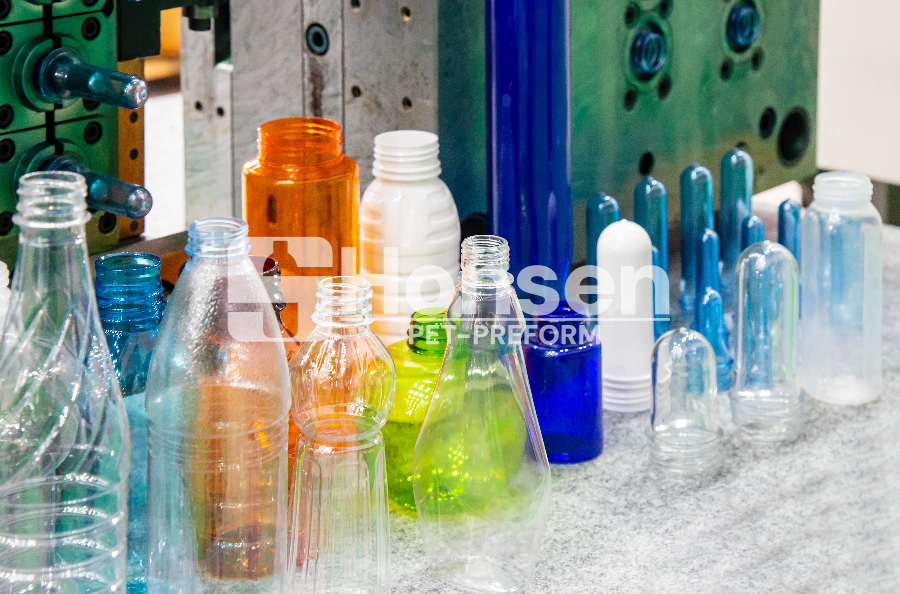In your actual production, have you encountered a problem of not understanding how to choose a PET preform suitable for your mineral soda or beverage products? You can first consider the purpose and requirements of the bottle. We provide the following (properties) for your reference:
1、The nature of the filling content:
Clearly define the bottle shape, capacity, and contents of the finished bottle. Then different contents have different requirements for the bottle. Soda carbonated beverages require heavy preforms because they need to be pressure-resistant; while mineral water will use small preforms for cost-saving considerations. For beverages with high-temperature filling requirements, if the bottle weight is too low, it will be easy to deform when subjected to high temperatures.
2.、Bottle design structure:
Based on demand and experience (or reference to similar bottle types), a target weight range is initially set. Bottle design software can be used for simulation analysis. Bottles with large capacity require more material stretching, but the thickness and shape of the bottle wall will also affect the weight. For example, with the same weight, a slender bottle may require a thicker bottle wall than a short and fat bottle to maintain strength, which recommends the use of a heavier preform. Finally, we recommend that you must use the target weight of the bottle preform for proofing tests, produce sample bottles to observe the actual effect and various tests to simulate the actual filling and transportation environment.

3、Cost factors:
This is a pain point that users care about. The weight is directly related to the consumption of raw materials, especially in large-scale production. Every gram saved can bring significant cost reduction. But at the same time, it is also necessary to consider whether the bottle preform is suitable for production equipment and processes, and whether it meets the conditions for transportation and warehousing. If you only pursue cost reduction and use lightweight preforms, but ignore other factors, it is easy to produce broken bottles, leading to customer complaints or higher return rates. This requires finding a balance point that can save costs while ensuring quality.
4、Environmental regulations and sustainability:
The global trend is to promote lightweight plastic packaging to reduce plastic usage and carbon emissions. Choosing the minimum weight that meets functional requirements is in line with environmental protection requirements and corporate social responsibility. Many regions now have restrictions on the use or recycling of plastics, or have recycling and regeneration requirements. Lightweighting can not only reduce the use of plastics, but also reduce carbon emissions in transportation. Users may need to understand local regulations or meet customer environmental protection requirements.